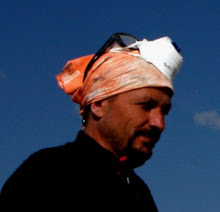THE MOTIF OF PASSION QUALIFYING M. BULAT’S SCULPTURES
Kaya Özsezgin
The silent dialogue between the material from which a scultpure is created and the artist who reproduces it by converting determines the structural dynamics of the end product that can be created at the end of this process. In fact, this determinism is true to all branches of art. However, a sculpture keeps in itself the changeable quality of this end product because of the qualitative-concrete values it contains and while carving this on the hard or semi-hard pores of the material, it still keeps itself confined to the predetermined dimensions and shape of the end product. This is a case that is shaped from inside toward outside in a sulpture and that requires the artist to hold his/her dominance over the object at a dominant level at all times.
As is known, carving, chiseling, modeling or constructing different elements to create a given structure are among the techniques frequently tried and used in sculpture. These methods may either be connected to one another within the artist’s practice of working or handled at the level of preference as a singular working principle for long.
As a young artist, Mustafa Bulat seems to be attempting in either way within the context of technical solution procedures of the issue. It is possible to witness in his works that he has made use of different materials and thus different technical solutions; for example, it can be observed that he has handled, or is handling, the white marble in a process focusing on the ‘main form’ as a worker loyal to this traditional material. What, however, remains unchanged in either method is the constructiveness of this main form and its indicativeness to ‘human’. Whether in his sculptures referring to the theme of captive man, which are made from two materials, bronze and aluminium, the former being hard and the latter relatively soft, or in his monumental bronze works which place the emphasis on man’s superior and creative identity, the unchanged essence of his works is the unconsumed cynosure of the sculpture and its structural harmony handled within the context of human body and its deformation. Yet it is not surprising that this harmony is associated with the modernist tendency in terms of form though loyal to the dimensions of meaning glorified by the classical culture. In his scultpures that can be categorized under both groups and in his other sculptures that have an indirect connection with these two groups, man in his posture and superior behaviour keeps attracting the viewers. In his marble sculptures, in particular, horizontal linear details showing a structural trend harmonious with the vertical position of the top-down figure also reflect the quality of a layered flow.
All the above points may be taken as the indicators of the fact that the artist approaches the issue of modern sculpture from an analytical and conceptual perspective. These indications, which can be defined as connective characteristics of the artists of the same generation, underline once more the very fact that a scultpure can be included in the scope of modernity in terms of mass and place, the state of belonging and identity, meaning and interpretation.
Bulat, on the other hand, carries out an important duty parallel to his mission as an artist in a distant corner of Anatolia as he has undertaken to work as an art trainer at the university in Erzurum for some time. To become an artist and an art trainer because of the cultural structure and conditions of Turkey necessitates a self-sacrificing process of working to that you perhaps cannot witness in any other countries. When his identity as a sculptor is combined with his mission of teaching the sculpture and, above all, making it popular in that part of the country, the symbolic meaning of the product is doubled and carries the problems to be emphasized by the artist on an intellectual scale to new and further points.
If Bulat’s identity as a sculptor is going to be a reference for the artistic connections to be established between the existing works and the ones that he will produce from now onwards, the price of passion and excitement will thus pay itself.
15 Eylül 2008 Pazartesi
Kaydol:
Kayıt Yorumları (Atom)

Hiç yorum yok:
Yorum Gönder